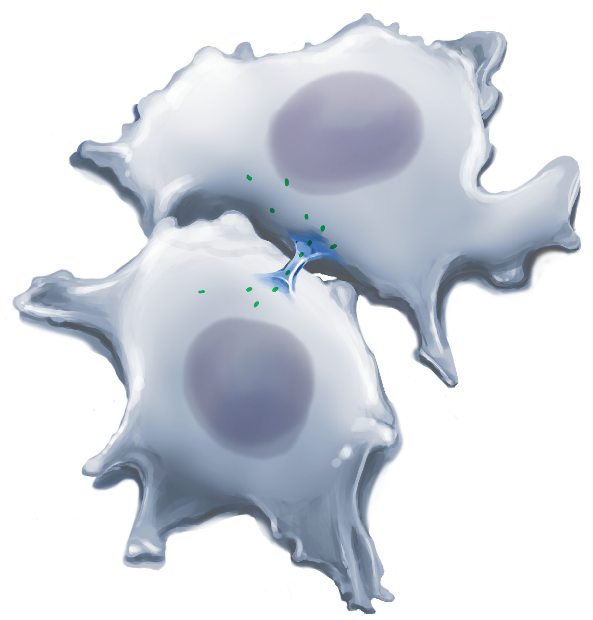
In a study published online on October 24 in the Proceedings of the National Academy of Sciences, Einstein researchers, led by Robert Singer, Ph.D., describe the mechanism by which messenger RNA (mRNA) molecules travel from one cell to another: via extensions called membrane nanotubes that form when cells are in direct contact with each other. The transfer of mRNA from cell to cell could influence processes such as tissue development and cellular response to stress. Dr. Singer is professor and co-chair of the department of anatomy and structural biology, as well as co-director of the Gruss Lipper Biophotonics Center and of the Integrated Imaging Program. He is also the Harold and Muriel Block Chair in Anatomy and Structural Biology. Gal Haimovich, the study’s lead author, was a Gruss Lipper postdoctoral fellow at Einstein when the research was conducted.
